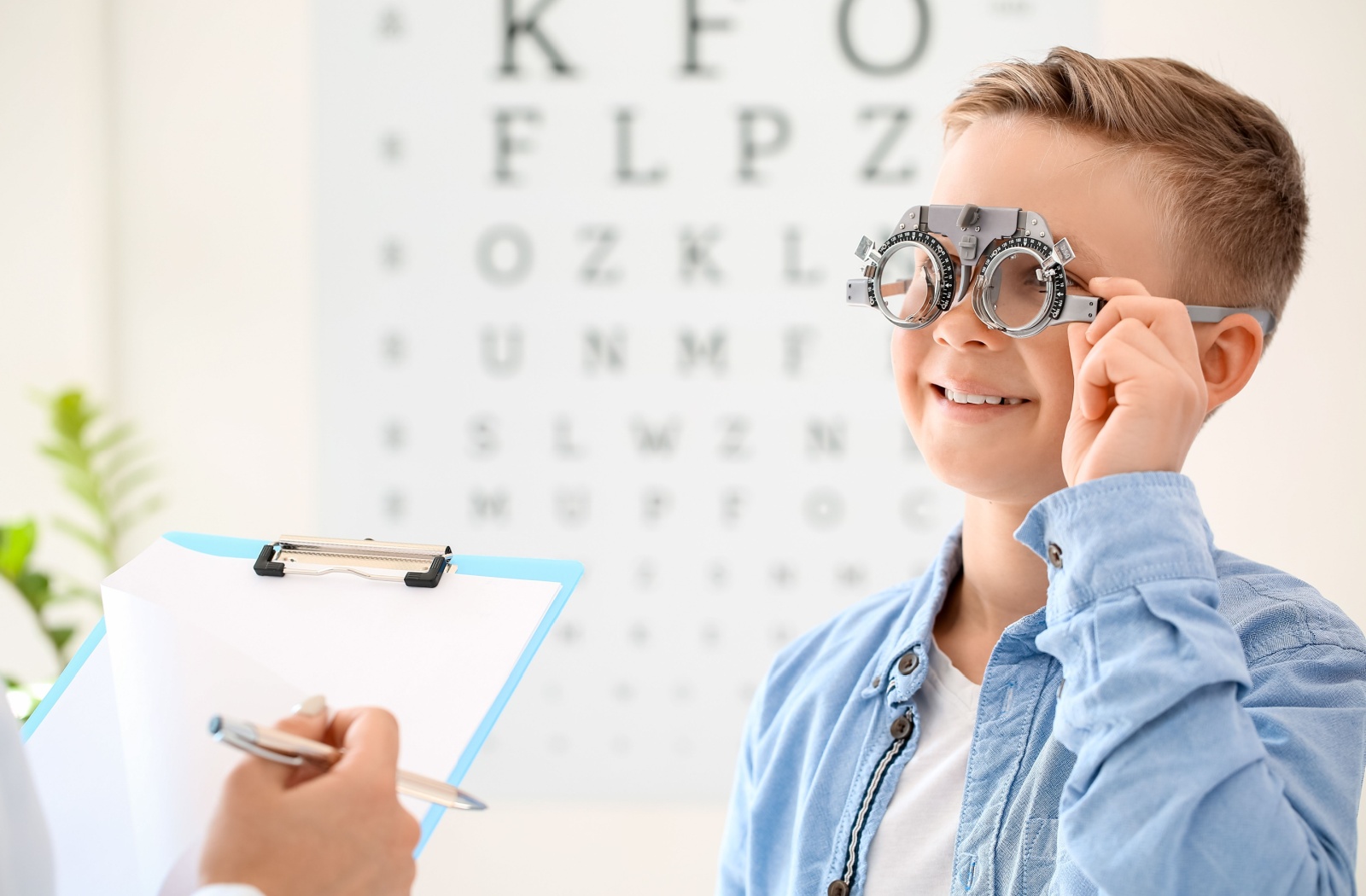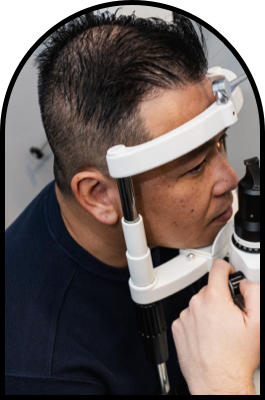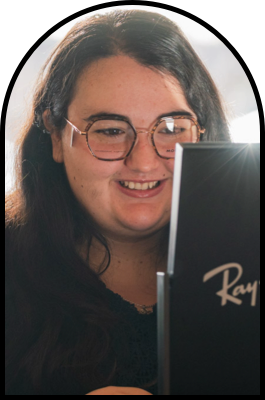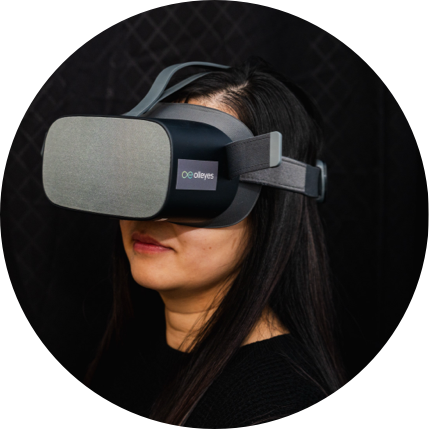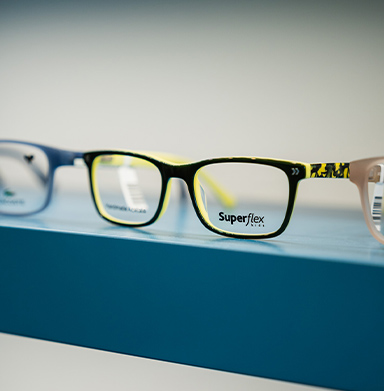Visiting your optometrist for comprehensive eye exams is a valuable tool in caring for vision and eye health.
The Province of Alberta recognizes this importance, which is why comprehensive eye exams are covered once a year for children until they turn 19 years old.
Importance of Comprehensive Eye Exams
The importance of comprehensive eye exams extends beyond assessing one’s visual clarity. They provide a detailed evaluation of both vision and overall ocular health.
In addition to providing a vision prescription for glasses, these exams can help detect any underlying eye conditions and may help to improve children’s performance in school.
Early Detection of Eye Conditions & Diseases
Some eye conditions and diseases may develop without any immediate symptoms, which makes routine visits to an optometrist important. In some cases, children may be unaware they are even experiencing visual problems because the way they see the world is normal to them.
Regular eye exams can help in early detection, monitoring, and treatment of potential ocular conditions.
Early treatment of eye issues can prevent them from becoming more serious and may provide better visual outcomes for a child.
Common eye conditions found in children that optometrists may want to screen for include:
- Amblyopia
- Binocular vision dysfunction
- Convergence insufficiency
- High myopia
- Pediatric cataracts
- Strabismus
Fortunately, early detection and management can help slow the progression or treat these eye conditions.
Impact on Development & Learning
During a child’s first 12 years, 80% of their learning is visual!
Good ocular health and vision are key to a child’s development and learning performance. Children use their vision to explore the world around them and interact with people and their environment whether in school or extracurricular activities.
Poor vision can impact their ability to read, write, focus, and participate in school which can affect their academic performance, social connections, and self-esteem. If vision is slightly impaired, it may lead your child to work harder, strain their eye muscles, and develop headaches.
Signs Your Child May Be Having Visual Problems
It is always encouraged to have your child’s vision checked annually.
As parents, it may be difficult to realize if your child is having vision concerns. Some children may not express any difficulty seeing because they may assume everyone sees the world as they do.
Signs of vision-related concerns to look out for include:
- Headaches
- Light sensitivity
- An eye that turns in or out
- Squinting or excessive blinking
- Lack of concentration
- Covering, or closing one eye
- Holding objects very close
If you notice any of these vision-related symptoms in your child it may be a sign for them to visit an eye care professional. These symptoms may be due to a potential refractive error or a developing eye condition.
Annual Eye Exams During Childhood
Children are encouraged to have an eye exam once a year because their eyes grow and develop significantly during childhood, which is why some individuals may experience significant changes in their vision prescription.
Our eyes fully develop and our vision prescription stabilizes at around age 20.
The rapid changes in eye growth can lead to the development of refractive errors or other vision concerns which can impact a child’s learning. Regular eye exams allow optometrists to monitor these changes and provide timely interventions if necessary.

How Often Should a Child Have an Eye Exam?
Through the Alberta provincial healthcare plan children 18 years old and under are covered for one comprehensive eye exam a year.
Individuals between the ages of 19 and 64 are not covered for comprehensive exams but may have coverage with their employer or own medical plan. Urgent eye health appointments are covered like diabetic examinations, red eyes, eye injuries, or emergency visits. Children are also covered for these ocular health appointments.
The Alberta Association of Optometrists recommends that children:
- Have their first eye exam between 6 and 9 months old.
- Toddlers and Preschoolers have at least one exam between the ages of 2 and 5.
- Once a child reaches kindergarten they’re encouraged to have an annual eye exam.
Annual Coverage for Routine Eye Exams
In Alberta, children are covered for one complete eye exam annually through the Alberta Health Care Insurance Plan (AHCIP). This means there is no cost for their eye appointments, making it easier for parents to provide necessary eye care for their children.
To be covered under AHCIP, a child must be:
- A resident of Alberta
- Physically live in this province at least 183 days out of the year
- Cannot be a resident or obtain benefits from another province
While eye exams are covered under the provincial healthcare plan unfortunately eyeglasses are not.
What Happens During a Children’s Eye Exam?
A children’s comprehensive eye exam includes evaluating overall eye health by assessing their:
- Color vision
- Depth perception
- Eye pressure
- Eye alignment, movement, and pupil response
- Visual acuity and refraction exam
Optometrists can assess ocular health and vision for children who do not yet know their ABCs. During an infant eye and young child eye exam, the optometrist will check that the baby’s eyes are healthy. They do this by evaluating eye muscle movements, eye alignment, and eye focusing.
Children who are verbal and do not yet know their ABCs can undergo a refraction examination by identifying photos in substitute of letters when assessing visual acuity.
If the optometrist suspects a child may be excessively straining their eye muscles during the vision assessment, they may recommend a cycloplegic refraction. During this exam, drops are used to dilate pupils and relax eye muscles. This process also helps to more accurately determine any refractive error.
Schedule an Appointment!
Children’s eyes develop and grow throughout their childhood and early adolescence which is why annual exams are important for maintaining good ocular health and vision.
Alberta recognizes the importance of children’s eye exams, which is why they are covered yearly for a comprehensive exam until they turn 19.
Connect with our team at Chestermere Optometry to schedule your child’s next comprehensive exam!


